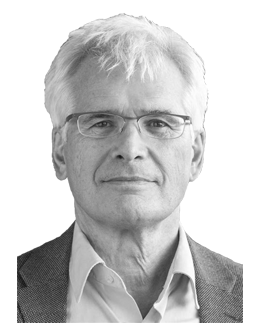Publications
744 Übereinstimmungen gefunden / 1-15 16-30 31-45 46-60 61-75 76-90 91-105 106-120 121-135 136-150 151-165 166-180 181-195 196-210 211-225 226-240 241-255 256-270 271-285 286-300 301-315 316-330 331-345 346-360 361-375 376-390 391-405 406-420 421-435 436-450 451-465 466-480 481-495 496-510 511-525 526-540 541-555 556-570 571-585 586-600 601-615 616-630 631-645 646-660 661-675 676-690 691-705 706-720 721-735 736-744
Proof of concept to secure the quality of research data.Azeroual, O. (2022).Proof of concept to secure the quality of research data. In Osten, W. (Hrsg.), Fourteenth International Conference on Machine Vision (ICMV 2021), 1208402 (5 March 2022). Rome, Italy: SPIE Digital Library. https://doi.org/10.1117/12.2622432 |
Viele Wege führen zur Promotion – Betreuungs- und Qualifizierungsbedingungen Promovierender an Hochschulen für angewandte Wissenschaften im Vergleich.Wegner, A. (2022).Viele Wege führen zur Promotion – Betreuungs- und Qualifizierungsbedingungen Promovierender an Hochschulen für angewandte Wissenschaften im Vergleich. Beiträge zur Hochschulforschung, 2022(1), 10-28. |
Performance and Structures of the German Science System 2022. Studien zum deutschen Innovationssystem.Stephen, D., & Stahlschmidt, S. (2022).Performance and Structures of the German Science System 2022. Studien zum deutschen Innovationssystem. Berlin: Expertenkommission Forschung und Innovation (EFI). |
Evidence and consequences of academic drift in the field of dental research: A bibliometric analysis 2000-2015.van der Wouden, P., Van der Heijden, G., Shemesh, H., & van den Besselaar, P. (2022).Evidence and consequences of academic drift in the field of dental research: A bibliometric analysis 2000-2015. BDJ Open, 8(3). Abstract
The mission of academic excellence has resulted in a science system that incentivises publications within high impact, often basic science journals, and less in application-oriented journals. For the dental research field this so-called academic drift can result in a research portfolio that moves away from research that serves dental healthcare. Using bibliometric data, our findings suggest that the dental research portfolio is influenced by academic drift. This academic drift has increased the disbalance towards basic science, and away from care oriented research. It presents a challenge for the scientific progress in dental healthcare services. |
Informationsmanagerin gesucht – Die Rolle wissenschaftlicher Bibliotheken in der Forschungsberichterstattung in Deutschland.Petersohn, S., & Thiedig, C. (2022).Informationsmanagerin gesucht – Die Rolle wissenschaftlicher Bibliotheken in der Forschungsberichterstattung in Deutschland. ABI Technik, 42(1), 70-77. Abstract
Whilst libraries have already developed new specializations as curators of research data, we ask which role the collection and processing of research information will play as a research support service in academic libraries and how this affects their task and competency profiles in the future. Based on an analysis of job advertisements for the years 2005 to 2020 and an online survey, we identify formal tasks and competency requirements as well as current task profiles and perceived areas of competency. |
Familie, Karriere oder beides? Die spezifischen Vereinbarkeitsprobleme im Wissenschaftsbereich.Lange, J., & Ambrasat, J. (2022).Familie, Karriere oder beides? Die spezifischen Vereinbarkeitsprobleme im Wissenschaftsbereich. In S. Korff & I. Truschkat (Hrsg.), Übergänge in Wissenschaftskarrieren (S. 95-123). Wiesbaden: Springer VS. |
A study of referencing changes in preprint-publication pairs across multiple fields.Akbaritabar, A., Stephen, D., & Squazzoni, F. (2022).A study of referencing changes in preprint-publication pairs across multiple fields. Journal of Informetrics, 16(2), 101258 (online first). https://doi.org/10.1016/j.joi.2022.101258 |
International scientific collaboration of post-Soviet countries: a bibliometric analysis.Matveeva, N., Sterligov, I., & Lovakov, A. (2022).International scientific collaboration of post-Soviet countries: a bibliometric analysis. Scientometrics, 2022( 127), 1583-1607. https://doi.org/10.1007/s11192-022-04274-0 |
Apache Spark and MLlib-Based Intrusion Detection System or How the Big Data Technologies Can Secure the Data.Azeroual, O., & Nikiforova, A. (2022).Apache Spark and MLlib-Based Intrusion Detection System or How the Big Data Technologies Can Secure the Data. Information, 13(2), 58. https://doi.org/10.3390/info13020058 |
Datenportal der National Academics Panel Study (Nacaps) - Hochschulspezifische Ergebnisse der Promovierendenbefragungen 2019-2021.Gottwald, A., & Wegner, A. (2022).Datenportal der National Academics Panel Study (Nacaps) - Hochschulspezifische Ergebnisse der Promovierendenbefragungen 2019-2021. Berlin: DZHW (nicht zur Veröffentlichung vorgesehen). |
The rise of the guest editor—Discontinuities of editorship in scholarly publishing.Knöchelmann, M., Hesselmann, F., Reinhart, M., & Schendzielorz, C. (2022).The rise of the guest editor—Discontinuities of editorship in scholarly publishing. Frontiers in Research Metrics and Analytics. https://doi.org/10.3389/frma.2021.748171 Abstract
Scholarly publishing lives on traditioned terminology that gives meaning to subjects such as authors, inhouse editors and external guest editors, artifacts such as articles, journals, special issues, and collected editions, or practices of acquisition, selection, and review. These subjects, artifacts, and practices ground the constitution of scholarly discourse. And yet, the meaning ascribed to each of these terms shifts, blurs, or is disguised as publishing culture shifts, which becomes manifest in new digital publishing technology, new forms of publishing management, and new forms of scholarly knowledge production. As a result, we may come to over- or underestimate changes in scholarly communication based on traditioned [...] |
Untersuchungen zur Datenqualität und Nutzerakzeptanz von Forschungsinformationssystemen.Azeroual, O. (2022).Untersuchungen zur Datenqualität und Nutzerakzeptanz von Forschungsinformationssystemen. Framework zur Überwachung und Verbesserung der Qualität von Forschungsinformationen. Wiesbaden: Springer Vieweg. https://doi.org/10.1007/978-3-658-36702-2 |
Contact




